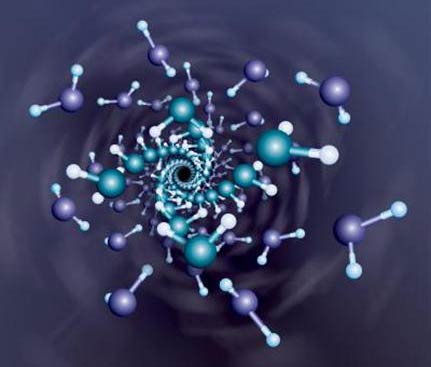The unknown effects of nanotechnology
Nanotechnology is welcomed as the science of the future, with microscopic particles that create innovations that remove facial folds, make beer bottles stronger and wash clothes without water. But recent studies have also implied that some of these particles can cause cancer.
'We should realize that there will be errors and there will be dangers,' said Professor Harry Kroto, who won the Nobel Prize in 1996 for chemistry and discovered the nanoparticle called the Buckminsterfullerene. 'In return, there is a possibility that the value of nanotechnology will be overwhelming. In my opinion, it is the science of the 21st century. '
Nanotechnology is the science of studying and creating materials that are 1 nanometer wide or one billionth of a meter. Scientists say the study of these particles promises the ability to make small-sized machines atoms one by one, just as every life begins with one cell.
'The important issue here is that we're developing atoms. We are working hard to make the world's unified blocks obey us. ' Mr. Patrick Lin, Director of Nanoethics Group of California Polytechnic State University, said.

Computerized image of a nano spiral: The oxygen atoms are blue in the inner spiral, and the purple is on the outer spiral.White hydrogen atoms.(Photo: Reuters)
Some scientists have used nanotechnology to add small silver particles, long known to be antimicrobial, to razors, food storage boxes and ' antifungal ' socks.
Some other scientists exploit unusual properties that appear at the nanoscale. For example, in the laboratory, normal carbon molecules can form tubular molds, called nanotubes, that are 100 times stronger than steel and weigh only half the weight of steel.
Affects people
The problem is that these particles can be harmful to the human body, and scientists say it will be years before they fully understand their effects. Nanoparticles are small enough to be ignored when passing through the cell membrane but also large enough to carry foreign substances into the middle of DNA strands.
There are no long-term studies on this issue, but scientists have seen brain cancer develop in fish that digest a small amount of carbon nanoparticles . Mice that inhale carbon nanotubes have lung problems similar to those caused by asbestos.

A drop of water perfectly balanced on a plastic surface invented by scientists at Ohio State University.The plane is covered with extremely small fibers and can suck or push water.(Photo: Reuters)
'There is no reason to think that all these things will be harmful,' said the scientist specializing in Environmental Defense, John Balbus. 'But we should be careful because they have the ability to get into the body and infiltrate parts of the body that normal chemicals can't do.'
The federal fund for nanotechnology research has tripled since 2001, but environmental groups complain that regulations do not keep up.
'We call on the government to invest more in health, safety and environmental research so that we can ensure that these products are safe,' said Ian Illuminato, who participated in many health campaigns. health and the environment at the Friends of the Earth organization, said.
The US Food and Drug Administration announced in July that pharmaceuticals, cosmetics and other nanotechnology products do not need special labeling or labeling because The agency said there was no scientific evidence showing any serious safety risks. However, some other companies have their own actions.
This year, DuPont has approved a system - developed by Environmental Defense - to assess whether or not to conduct projects involving nanoparticles.

An illustration shows polymer nanoparticles in the blood stream.Photo provided by UCSB Experimental Medicine and Biology Association.(Photo: Reuters)
Thanh Van
- Learn about nanotechnology in industrial production
- Nanotechnology and applications of nanotechnology
- Nanotechnology: A blessing or a curse for developing countries?
- Nanotechnology in the fight against viruses
- South Korea ranked fourth in nanotechnology
- Nanotechnology and applications
- 21st century: Century of Nanotechnology
- Reproduce the organ with a chip
- Create steam using nanotechnology
- Why is the word 'x' used for unknown symbols in mathematics?
- Super products created by nanotechnology
- Develop nanotechnology to kill cancer cells
 Why do potatoes have eyes?
Why do potatoes have eyes? 'Tragedy' the world's largest carnivorous life: Death becomes ... public toilet
'Tragedy' the world's largest carnivorous life: Death becomes ... public toilet Tomatoes were once considered 'poisonous' for 200 years
Tomatoes were once considered 'poisonous' for 200 years Detecting microscopic parasites on human face
Detecting microscopic parasites on human face